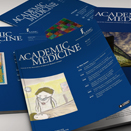

If you have put in efforts writing your academic article and invested a huge amount of time in dotting the i’s and crossing the t’s, you would certainly expect to get it published as quickly as possible. But contrary to perception, getting your article published in the journal might turn out to be a complex procedure. Going through several stages of fact and grammar checks, your article needs to be in accord with the guidelines of the publishing journal. So what steps do you follow to ensure that your article isn’t rejected once you submit it for publishing?
Targeting an Appropriate Journal
First and foremost, you article needs to be articulate. If it is, submitting it to the top journals in your field might sound tempting. But keep in mind, the leading professional journals have exceedingly high standards. Their publishers are subject scholars and prize-winning authors adorned with honorary accolades and decades of experience, with articles of groundbreaking discoveries, published with considerable research budget and institutional support. So, think twice before you go ahead giving your article for review in these journals.
Secondly, if it’s your first academic article, you should target student oriented journals (like Student Pulse), which gives you the required platform by publishing your article and provides feedback on your ideas. It might take several months before you get a response from a particular journal confirming your publication, but don’t lose hope. Try to limit multiple submissions, as some journals don’t accept an article for review unless it is the only one reviewing it.
Thus, if you are strategic in selecting a journal, you will greatly increase the odds of publishing your article. More the number of publications, more likely you are to publish in your top journal.
Introduce Something New
Your article will gain more traction in the journal bazaar if it brings something new to the table. Quoting your abstracts from previously published articles won’t help in making a first good impression with the article reviewers. If your literature review establishes the base of your journal, you shouldn’t structure the body of your article theorizing on the same premise. You need to use the existing literature to establish new questions and attempt to answer them. But don’t go overboard asking preposterous questions and losing your base principle. This ensures the credibility of your article and gives journal reviewers a reason to give your article an unbiased read.
Edit Your Work Thoroughly
Once you are done pouring all the ideas on the screen, one fourth of your work is done. The remaining three-fourth includes editing and scrutinizing your academic paper for logical fallacies. When you start writing, you are in the zone, making trivial grammar mistakes, trying to bring a sense of completeness in your article. To make it review-worthy, you need to make sure that your words are as articulate as your thoughts.
Avoid the usage of commas, semi-colons, and dashes, etc., to reduce the length of the sentence and give your readers a simple and easy read. Moreover, maintaining a passive voice structure throughout the article might come out as verbose and superfluous to the reader. Active construction of sentences gives your reader specific details quite clearly. In a nutshell, you should go through an extensive editing process to get a stronger paper, logically and linguistically both.
Gain Reviewer’s Trust
Article reviewers are burdened with a plethora of submissions, which in turn gives them a reason to decline articles based on critically minute errors.
First, you need to strictly adhere to their guidelines and their specific formatting requirements (including citations).
Second, if you want the reviewer to give a green light to your article, your stated arguments should be perfectly balanced i.e. they should be neither overly strong nor too prejudiced.
Third, avoid the overuse of one-dimensional assertions, like cause and effect, about any complex phenomena. Moreover, try not to present every reference as hard evidence of a particular point, thus acknowledging opposing viewpoints.
If you follow the above steps, your article will be technically sound and might as well clear the review stages.
For More Information
To submit your articles to well-standing journals, you might need to convert the content in the XML format. SunTec has been offering quality Journal Conversion Services for years in sync with the specific requirements of the clients. To learn more about our ePublishing Services, please drop us a line at info@sutecindia.com.

